
by John Horton | Jul 5, 2016
A day dominated by maintenance around our field centre was interrupted by the presence of a Hippolais Warbler amongst the shrubs and bushes in front of the obs. The bird showed very well at close quarters and had an obvious primary projection but I could not see a wing panel. Probably Icterine but I couldn’t be sure. Leaving the bird for a couple of minutes to get my bins I could not relocate it on my return. May be it will be in the nets in the morning !
Ok finally got round to reporting day 3 of our seabird ringing, on Coque Lihou:
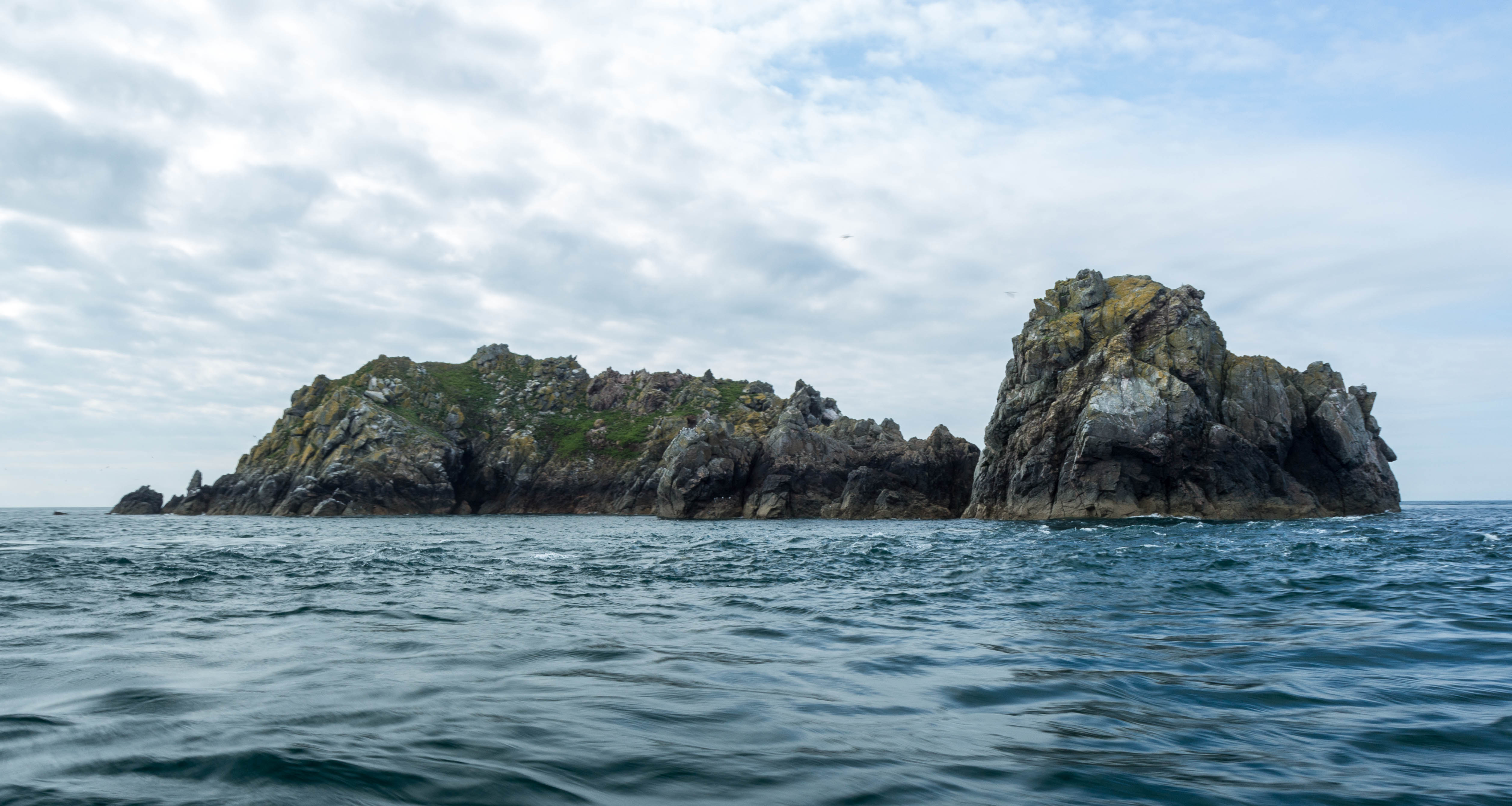
Approaching Coque Lihoa
If you look closely at the below photo you can see some of the research team (yellow hard hats) having landed and then climbed to the vegetation line. From here we set off around the rock searching for Auks, Gulls and Shags, we were fortunate to find some of each.
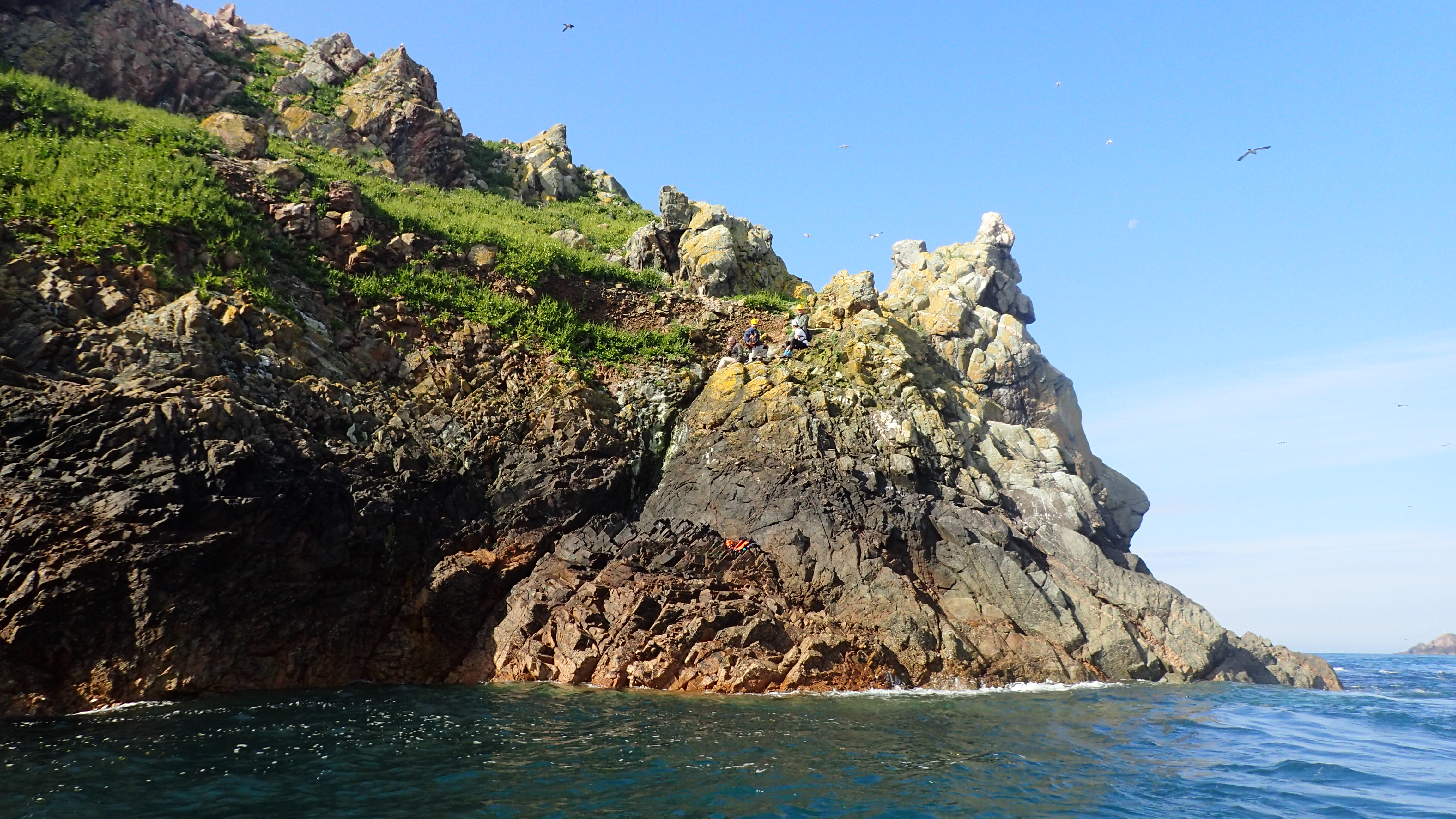
Advance team landed
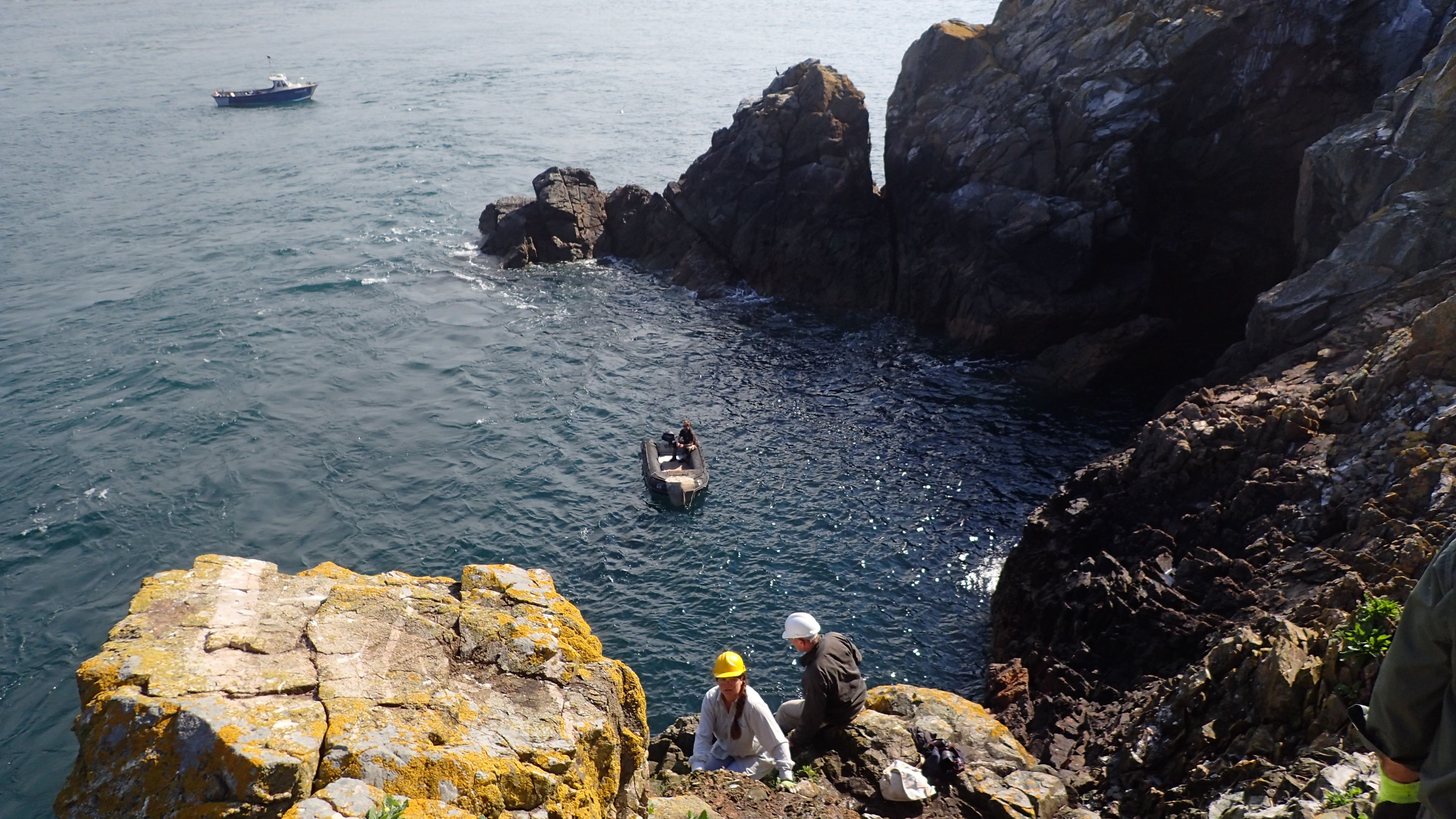
An incident free landing and climb
Some excellent work from the researchers locating Guillemots and Razorbill nests enabled the best ringing return for auks since 1953, this year 23 birds were ringed, adults and chicks of both species.
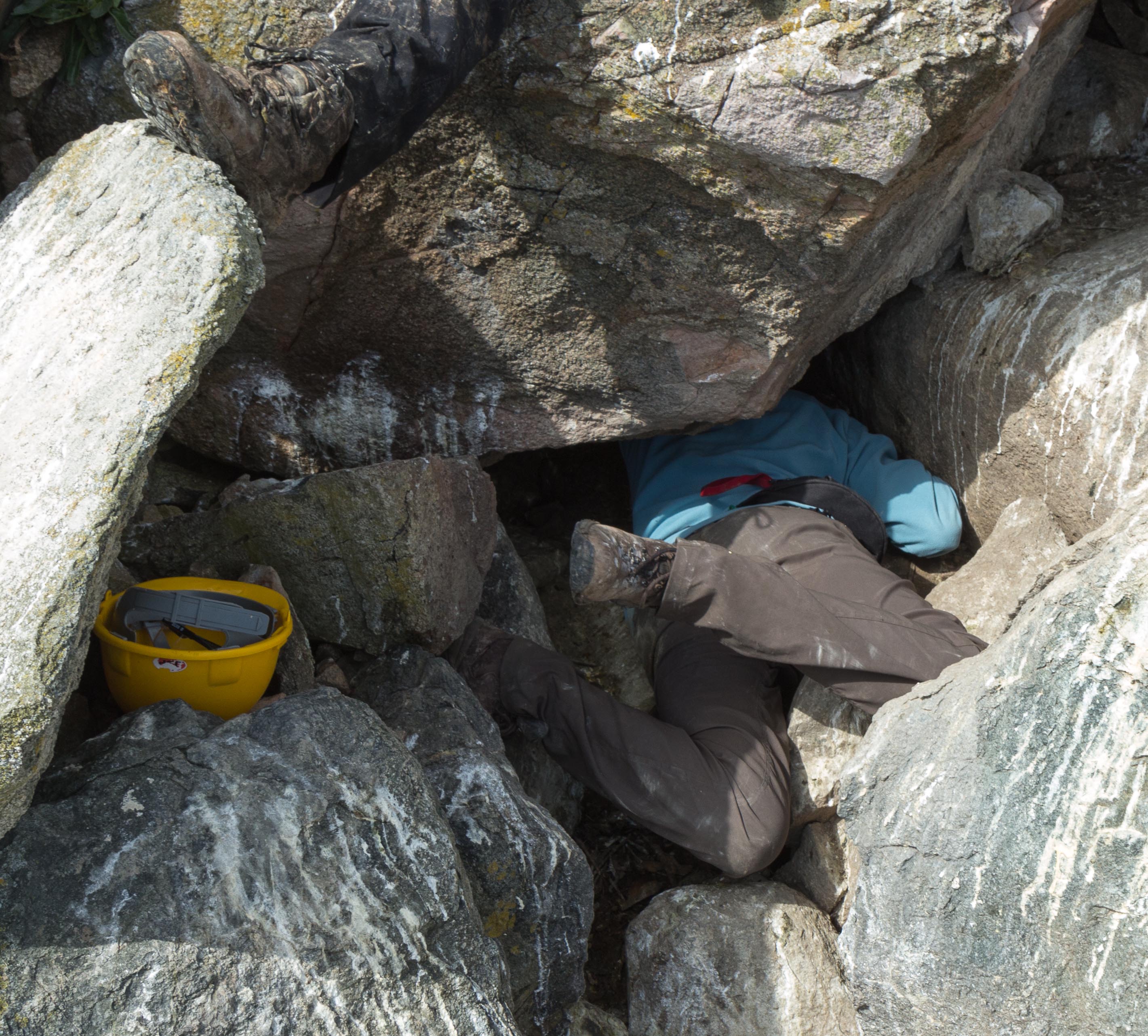
Researcher Harriet Clark seeks out nesting Auks
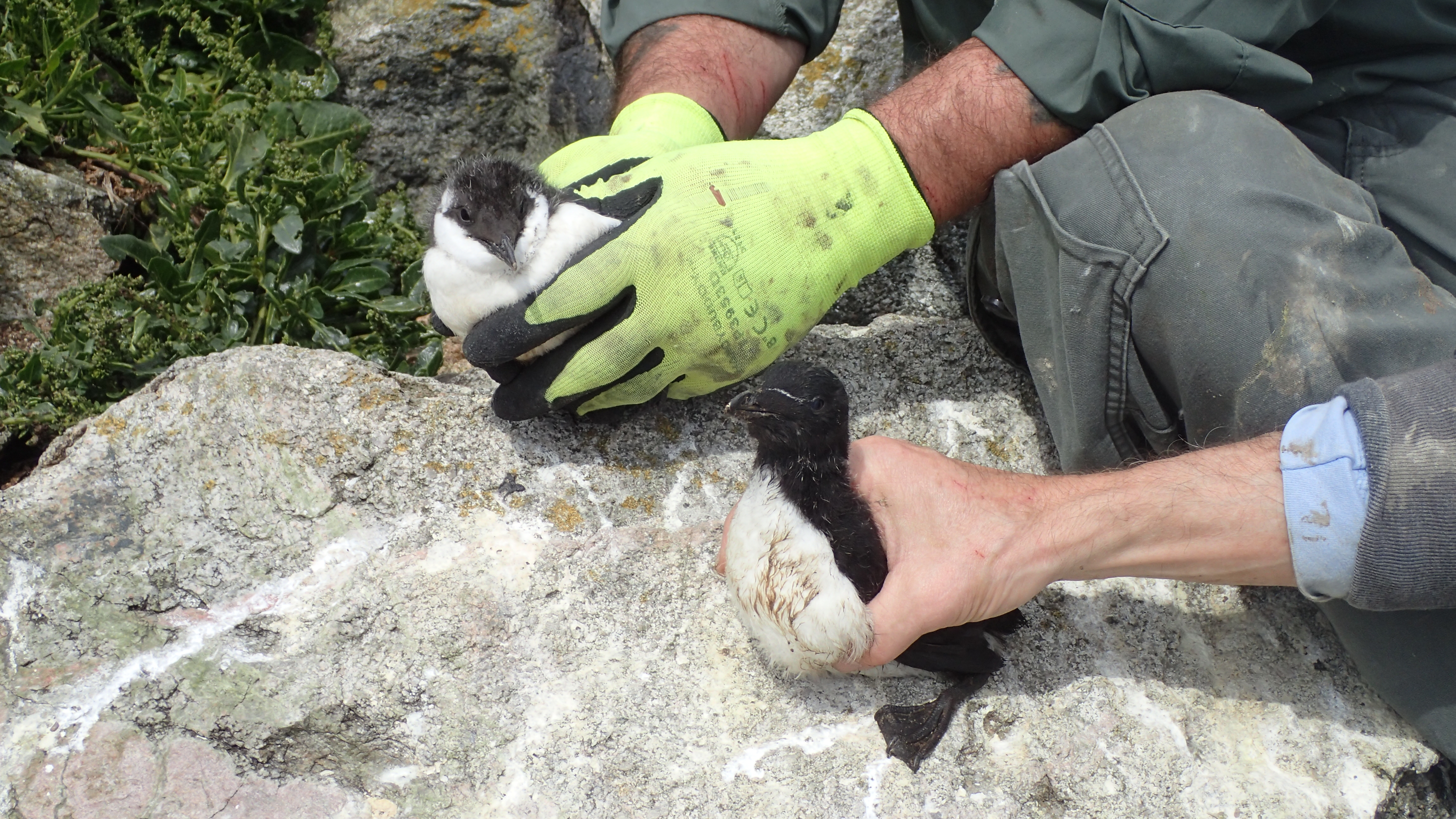
Guillemot chick (above) and Razorbill chick (below)
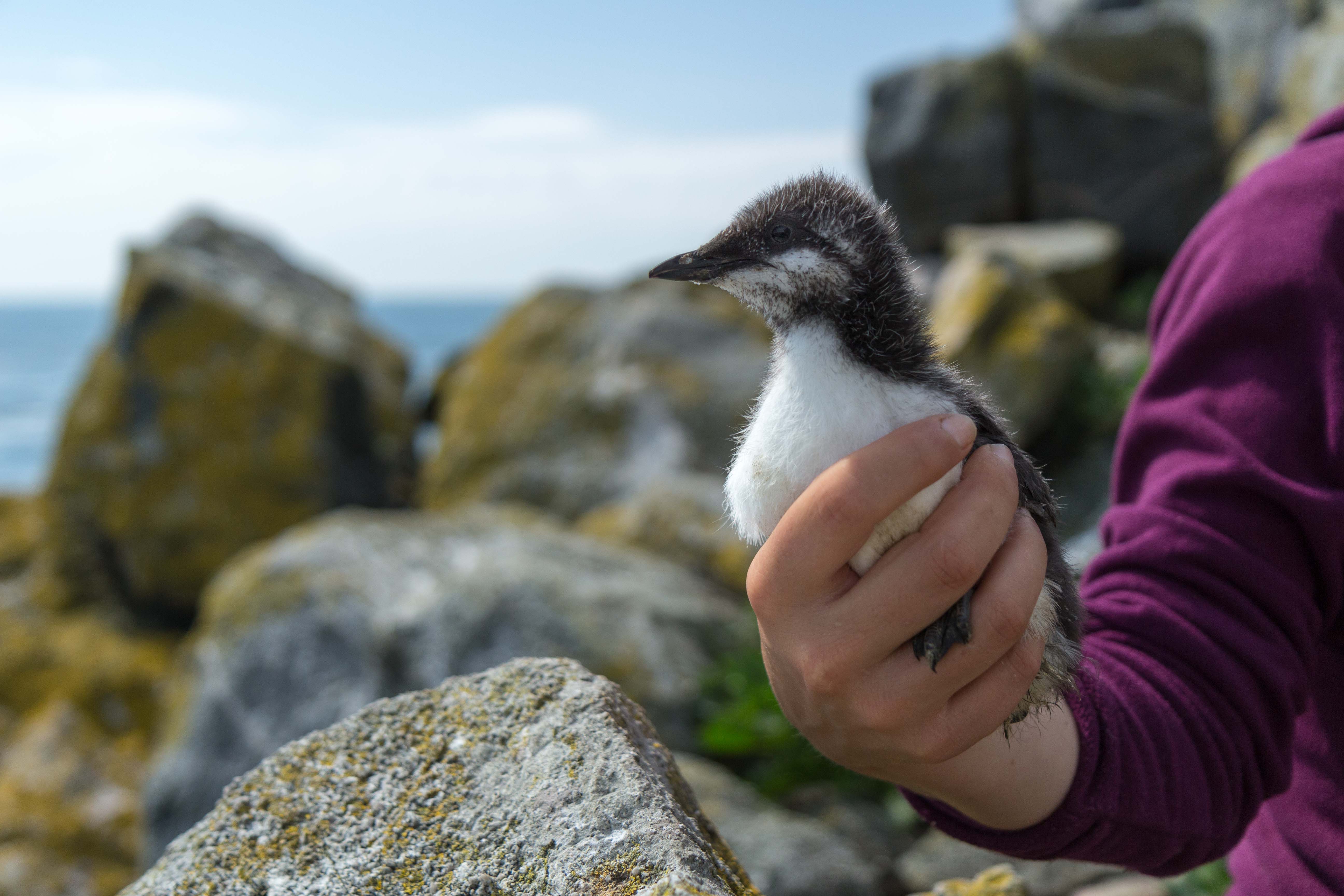
Guillemot chick, one of 16 ringed
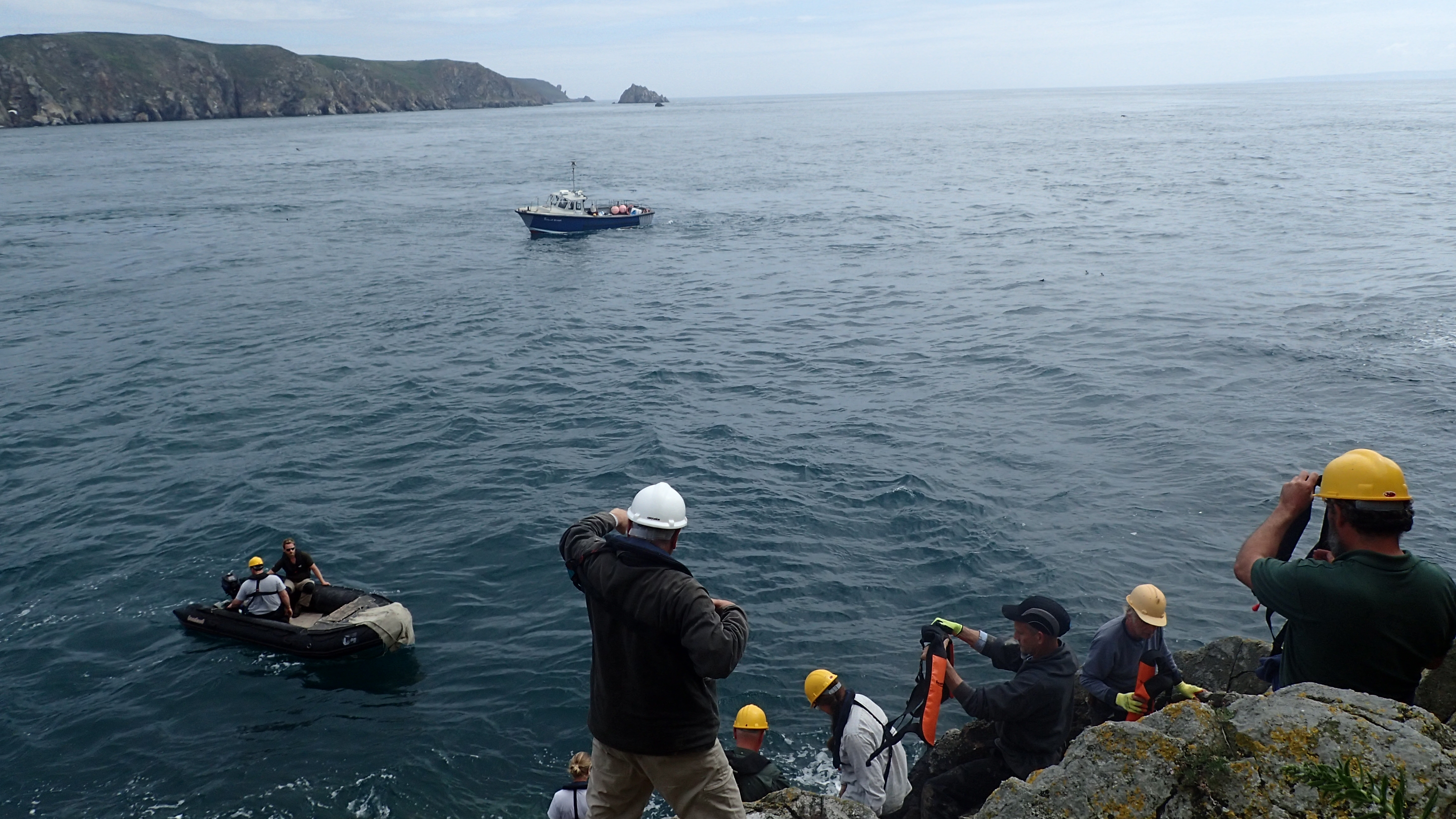
The team prepares to leave the rock
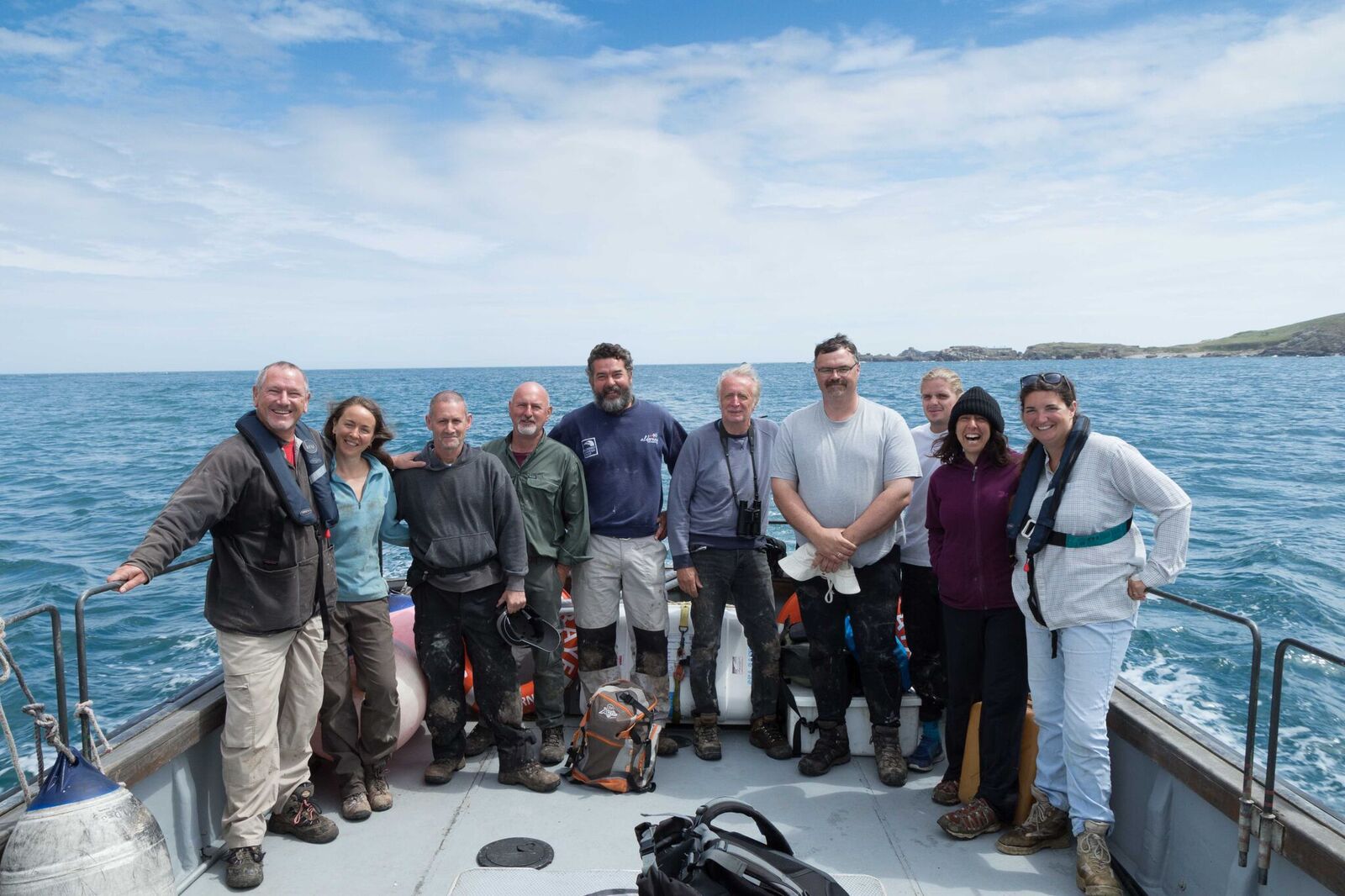
2016 Alderney Seabird ringing and research team
The ongoing seabird research on Alderney is executed annually by a dedicated team with very special skills and knowledge that I was lucky enough to soak up over three magnificent days. The Gannet research on Alderney is leading the world, record breaking information is currently being transmitted to us via the GPS tags fitted to the adult Gannets. Ultimately this is educating us and providing a better understanding of these superb birds that they may be best protected, and that visitors to Alderney may have the opportunity to enjoy and admire them for generations to come.
Special thanks to Roland Guavian for his boatmanship skills that enabled us all to get on and off the rocks safely 3 days running ! And to Bugsy our boat skipper whose knowledge local sea state and tides afforded us enough time on the rocks to complete our work.
Next year will see the opportunity for more ringers and researchers to take part in our seabird ringing program and stay at the Observatory. This coming Saturday new ringers are joining us from the UK to help ring our Lesser black backed Gull colony on Burou. At the end of the month we are back to the boat for a weekend Storm Petrel ringing. I hope to be setting out dates and seabird ringing opportunities for 2017 on this site next month.
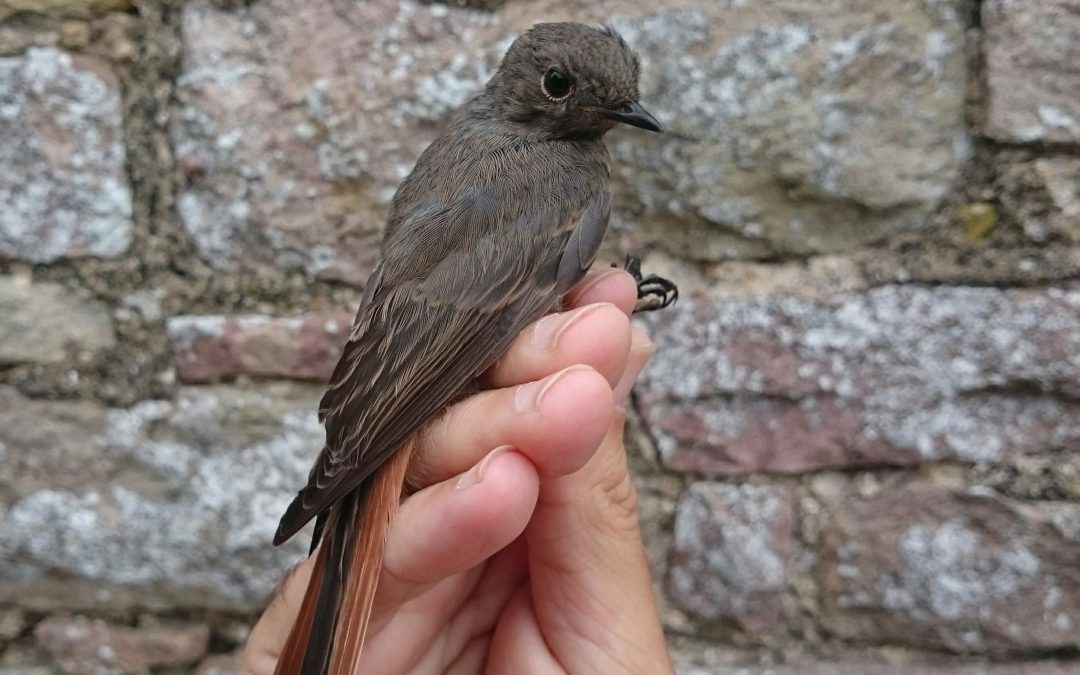
by John Horton | Jul 5, 2016
Good ringing conditions made for a really good session on Longis Nature Reserve. A total of 66 birds from 14 species were processed and allowed our trainees to experience things getting a little busier. New birds ringed included a Black Redstart and 3 Stonechat.
A Grey Heron passed over Longis during the morning as did a Sparrowhawk and Peregrine. There were also half a dozen House Martins over the pond.
It has transpired that we do not appear to have Sedge Warblers breeding here on Alderney. Despite plenty of suitable habitat and over 150 individuals ringed on passage this spring, none have been recorded by ringers or birders here for over a month. Reed Warbler, in contrast, is not only common in our reed beds but also present and singing in many other areas of habitat where we might not expect to see them. Yesterday saw our first 2016 fledged Reed Warblers ringed and also one adult Sedge Warbler. I was keen to see if the Sedge we ringed showed any visible evidence of breeding and was surprised to see that, instead, the bird had a very healthy fat and muscle score. This suggests the more likely possibility that this individual may be a migrant already on its way back south. Sedge Warblers normally pass through the CIs in late July, through August and into the first week in September. They are a species that begin to moves south very early (and who could blame them).
This does appear to be an exceptionally early record. However, as the most southerly bird observatory in the British Isles we are ideally placed to record extreme bird migration arrival and departure dates. Local knowledge is that certainly by mid-July Willow Warblers are returning south and moving through Alderney and this ties in with my experience of Willow Warblers migrating through SE England from August, well in advance of most other species returning to warmer climes.
Black Redstart is recorded in The Birds of Alderney as ‘Occasionally seen on spring and autumn passage, a few in winter. The same reference goes on to say that there are no records between beyond April until September. Paul Veron spotted a female this May at Mannez lighthouse sparking consideration of them breeding and we had a cracking male in the Obs garden the same month. This morning a very young bird was caught on Longis reserve, its plumage strongly suggesting it had not long fledged. There are lots of very good breeding locations for Black Redstarts around Alderney and I suspect that, as we get more birders and ringers visiting us, these super birds will be pinned down as resident breeders, allbeit in very small numbers.
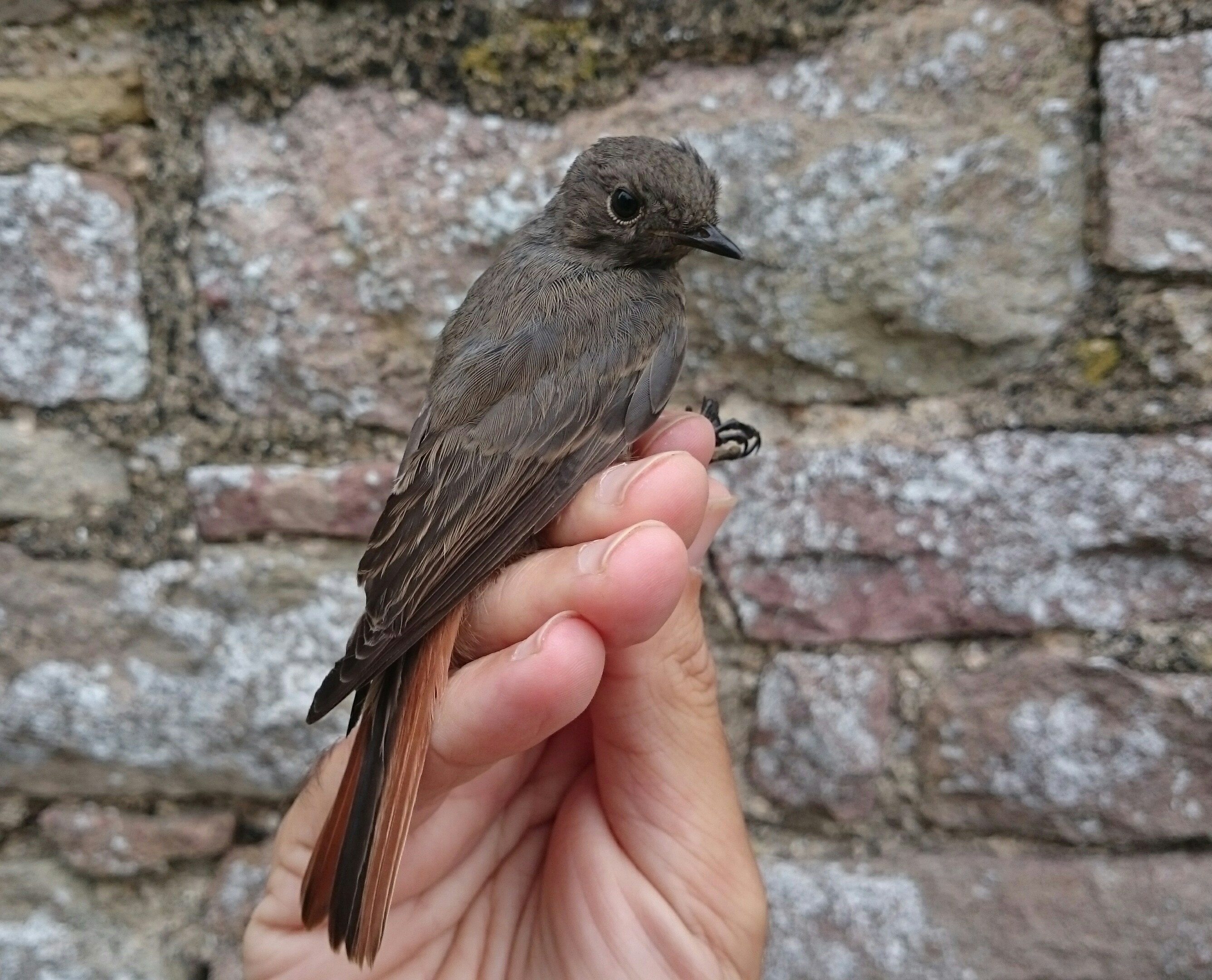
Immature Black Redstart – Longis Reserve
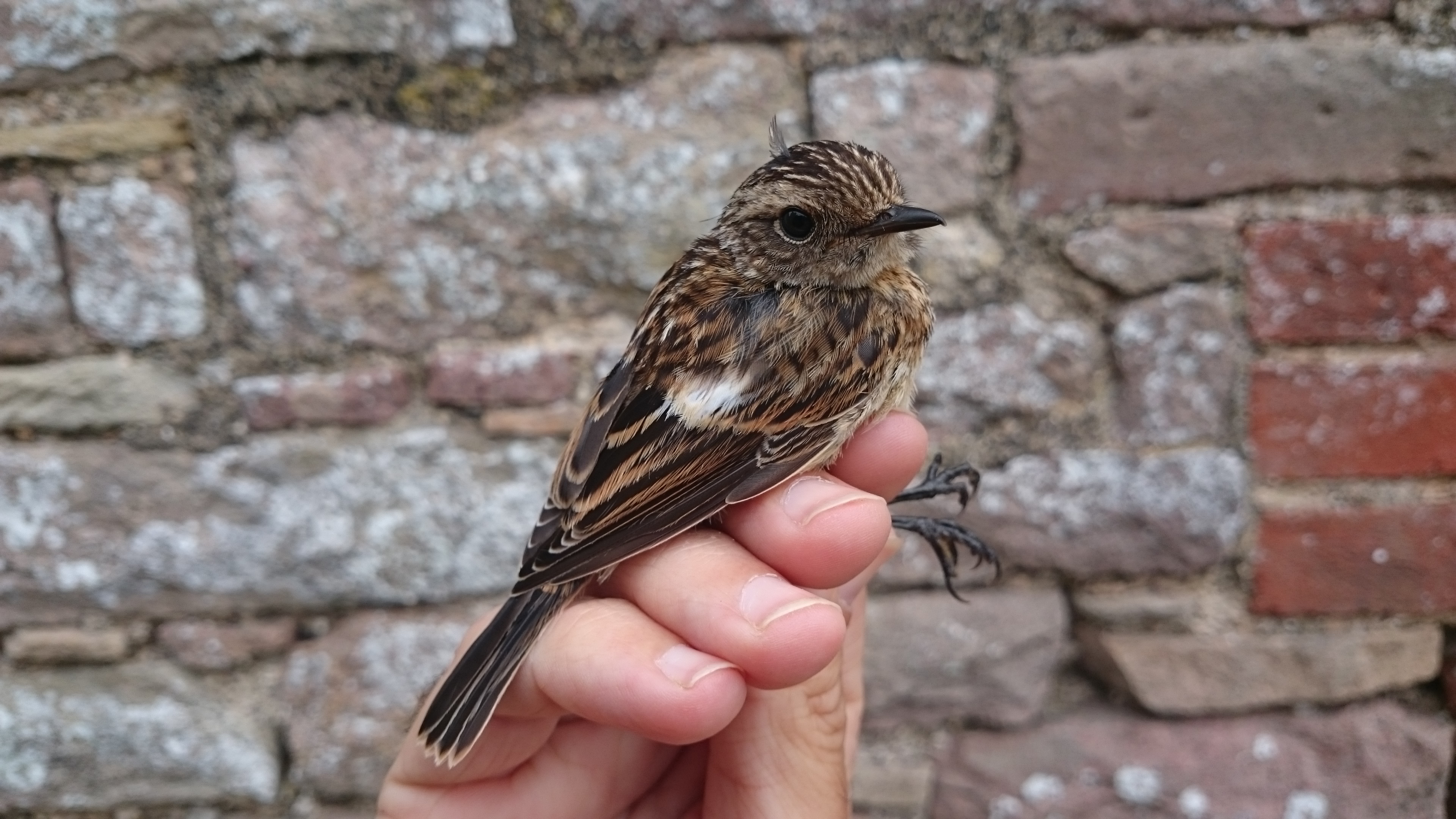
Immature Stonechat – Longis Reserve












